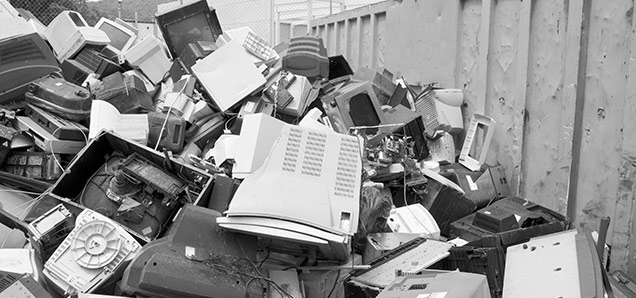Do you know where your e-waste goes?
 CREDIT: ANRODPHOTO/THINKSTOCK
CREDIT: ANRODPHOTO/THINKSTOCKFanshawe has an e-waste program to drop off small electronic items. Drop off your electronics at the Book Store or contact recycle@fanshawec.ca to arrange disposal for larger items.
Amanda Richman is sustainability co-ordinator for Fanshawe College.
Cadmium, beryllium, hexavalent chromium and arsenic are just a few of the heavy metals that are found in the electronic items we use on a daily basis – like our smart phones or laptops.
Every year, 20 to 50 million tonnes of electronic waste are generated worldwide. Electronic waste or e-waste refers to just about anything that runs on an electrical current or battery and are known to contain toxins that can be harmful to both human health and our environment.
Approximately 13 per cent of e-waste is recycled in developing countries. Nearly half of that e-waste is shredded, burned and dismantled in informal recycling markets in China, India, Pakistan, and Vietnam where locals retrieve valuable components from items such as cellphones, televisions, computers, circuit boards, and copper wires. A large majority of this e-waste is imported from developed countries in Europe and North America. There are serious health implications when inadequately handling e-waste, particularly with open burning or unsafe smelting of e-waste that creates particulate matter linked to pulmonary and cardiovascular disease.
Guiyu, China is known as the largest e-waste recycling site in the world. Although it is difficult to isolate health implications due to other informal working conditions such as poverty and poor sanitation, residents in Guiyu have exhibited significant digestive, neurological, respiratory, and bone problems. Additionally, research shows that toxic particles emitted by open burning of e-waste to retrieve valuable materials can persist in the environment for long periods of time, increasing heavy metal exposure risk for humans.
The United Nations Environment Programme estimates that by 2020, domestic television e-waste will double, computer e-waste will increase fivefold, and there will be 18 times the current amount of cell phones.
So, what can you do about the problem?
First, you can reduce the amount of electronic waste that you purchase. Before swapping your devices for the latest technology, consider borrowing devices or buying used to meet your electronic needs.
You may also want to lobby for manufacturers of electronic items to make their products with less toxic materials and encourage them to make products safer for recycling.
If you no longer require an electronic item, contact the manufacturer to see if they have a take back program. Ask them how they dispose of items responsibly and if they are able to take back your device for you. If this is not an option, look for an electronic waste-recycling program.
Last year, Fanshawe College generated 5,000 kg of e-waste. Fanshawe has an e-waste program in which you can drop off small electronic items at the Book Store. If you have larger electronic items, contact us at recycle@fanshawec.ca to arrange responsible disposal.













